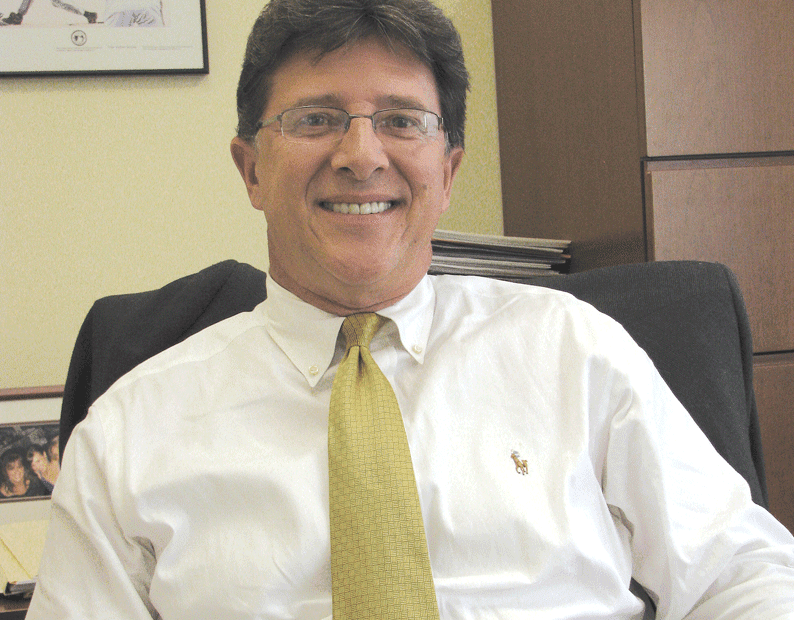
Compounding Interest
Principals Say NUVO Has Become a ‘Proven Commodity’

Jeff Sattler says NUVO is on target with its goals for assets, revenue, and gaining respectability in the local banking market.
That’s because he’s been in their shoes.
Indeed, five years ago, he was one of the principals trying to lure investors and amass the capital needed to launch the venture that would become NUVO Bank, which he now serves as president.
“When you’re dealing with a banker, most of them haven’t owned a business — they have to critique the business owner,” he told BusinessWest. “I started this thing with the same mentality as other entrepreneurs — ‘I’m going to do this; there’s a market, and I’m going to make this work.’ And I had the same growth pains, issues, challenges, and fears that any entrepreneur has. I can talk the same language as that business owner.”
This linguistic ability is one of the factors that Sattler and NUVO’s CEO, Dale Janes, believe have contributed to the bank’s steady growth and recent momentum. Like most of its commercial clients, NUVO’s primary objective has been to gain a strong measure of respectability and build a solid foundation for growth, said Janes, adding that, despite being launched just as the worst downturn since the Great Recession was taking hold, the bank has, in his opinion, achieved that goal.

While other banks rush to add branches, Dale Janes says NUVO will stay with its business model and maintain one location.
Sattler agreed. “We’re profitable right on plan,” he said. “I don’t want to be the biggest in this market; I want to be the most profitable, and that’s return on assets, return on equity, efficiency ratios … key bank ratios that we want to be leaders in eventually, and we’re getting there now.”
Janes told BusinessWest that the institution’s first four-plus years in business have proven that its basic model — operating through one location with a reliance on technology that would ensure that most clients would rarely see that facility on the ground floor of Tower Square — works, and there is no need to change it.
“Our overhead is so low, we can afford to be aggressive on retail CD rates, savings rates, and the costs of accounts,” he said while citing the main advantages to being small and efficient. “The core of our model is small business, small business, small business — and it’s worked; about a year ago, it really started to kick in.
“With longevity comes credibility,” he continued. “So, more and more now, customers who used to do business with Jeff or with me are saying, ‘these guys are around, and they’re going to be here; let’s go check them out.”
Doing some quick math, Sattler noted that NUVO, which just passed the $100 million mark in assets, has something approaching 1% of the regional market, and is by far the smallest bank in the region. While that number may not sound impressive, he said — while noting that doubling or tripling it would still give the bank only 2% or 3% of a market dominated by huge national and regional players — it is a solid base on which to build.
And as he surveyed the local banking market, especially the smaller, community institutions, Janes, who has been in the business for more than 30 years, sees ample opportunity to grow.
“There is going to be more consolidation within this market; it’s inevitable,” he said with a large dose of certainty in his voice. “And with that consolidation, there will be opportunities for banks with the right products and the right approach to customer service. We’ve positioned ourselves to be one of those banks.”
For this issue and its focus on banking and financial services, BusinessWest looks at how far NUVO has managed to come in four challenging years, and what the future could hold for the institution.
By All Accounts
As he prepared to talk with BusinessWest, Sattler was closing on another small-business loan, giving NUVO just over 80 such clients in its portfolio.
That’s another comparatively small number, especially when put alongside the other institutions with downtown Springfield mailing addresses, but Janes and Sattler both take a ‘glass is much more than half-full’ mentality.
“Every new customer is another dot on the map,” said Sattler, adding that the bank’s approach from the day it opened has been to achieve to measured, smart growth, while also carving out a specific niche in the market — in this case, what would be considered small, or even very small, loans.
And both officers believe the institution has achieved those missions, while also establishing the NUVO brand across Greater Springfield and into Northern Connecticut.
“This is the reason why we knew we were going to be successful — we have a niche,” said Sattler, referring to the small-business loans like the one he closed on that afternoon late last month. “Everyone thought we were going to fail, but we succeeded, because we created that niche.”
Both men said that virtually every bank in the region can write the kinds of small loans that NUVO has made its specialty, but most don’t have the need or desire to do so, and can’t do it as well.
“We’ll look at every single deal, no matter what the industry,” he explained. “I won’t say ‘yes’ to every deal, but if we can’t do it, then nobody can do it.”
Meanwhile, another advantage is the aforementioned ability to “speak the language,” as Sattler described it.
“I appreciate their passion,” he said of entrepreneurs. “They have a vision of where they want to take their company, and I can relate to that. I try to get under the tent with them and say, ‘how are we going to make this loan?’
“They say, ‘Sattler, I’m not talking to you like a banker,’” he continued. “And I’m not; I’m a business owner, not just a banker, who started the same way most of these businesses started.”
Overall, the bank has been “on target” with everything from asset growth to profitability to brand recognition, said Janes, adding that the current momentum has manifested itself in a number of ways.
For starters, there have been roughly 18 months of continued monthly profits, he said, adding that another commercial-lending officer, the bank’s third, was recently hired, and another addition is planned for the first quarter of next year. Meanwhile, the bank is planning another capital raise — the prospectus is currently being finalized — to provide the wherewithal to continue growing.
“We’re doing well against our original plan, and super well against our model,” Janes explained. “We have a lot of focus and a lot of discipline around the business model; we can’t be everything to everyone, and we’re honest about that.”
Balance Statement
Moving forward, Janes and Sattler said NUVO is in the process of scripting a new three-year strategic plan.
When asked what it will likely include, they said, in essence, there would be more of the same that has marked the bank’s four-plus years of existence — with the emphasis on more.
The planned additions to the commercial lending staff — “we’re now building a lending team,” said Sattler — and the capital raise are part of this strategic initiative, noted Janes. Overall, he believes that, given the bank’s steady growth and the current landscape in financial services, NUVO is well-positioned to add market share for the short and long term.
Elaborating, he said there are two trends in the marketplace that are working in NUVO’s favor. The first is a significant shift among consumers, business owners, and investors away from large regional and national banks and toward community banks.
“And why not? They’re just smaller, and they have more flexibility and more options for the small-business customer,” he told BusinessWest. “And we plan to take advantage of that, especially on the investor side, because as we grow, we’re going to need to raise more capital.”
The second trend, although it has slowed in recent years, is a movement toward greater consolidation, said Janes, adding that the many publicly owned regional and community banks serving Western Mass. are both candidates for additional expansion themselves or targets for acquisition. And both scenarios, which will be driven by shareholders and their desire for better returns, bode well for banks like NUVO that can take on customers left wary by such transactions.
“This is a very challenging time to provide a return to your shareholders,” he said of the situation facing the public banks. “Everyone’s had what amounts to a free pass because of the recession, because everyone made bad loans and business slowed down, but that free pass is going to get called in, and banks are going to have to start producing, either a dividend or growth in the market price of the stock.
“People are going to instigate,” he continued, “and get these banks to either perform better on an earnings-per-share basis through the organic nature of their business, or by selling.”
And while NUVO has plans for more lending officers, employees, loans, and assets, one thing there won’t be more of is branches.
“People keep asking me, ‘why don’t you open a branch here?’” said Janes, adding that there have been many suggestions when it comes to ‘here.’
“That’s not who we are or ever intend to be,” he continued. “We will never have a huge branch network, and probably will not have a traditional branch. We will expand our footprint; we will take our model and replicate it somewhere else, in a market where there are a lot of small businesses. That was our intent, and it’s still our intent. We’re not ready for it yet, but our three-year plan contemplates something like that.
“Right now, we just want to dominate where we are,” Janes went on, “and earn our keep in this region.”
Despite its lone location, NUVO has been able to grow its presence and build its brand through track record and word-of-mouth referrals. And with presence and referrals, the bank has opportunities to show what it can do, said Janes, which is an important component in the growth equation.
“Once we get in front of people,” he said, “we’re pretty good at bringing in some business.”
Brand Equity
Looking at the numbers compiled by area banks for assets, deposits, and loans (see pages 38 and 39), Janes and Sattler know they will be looking up at the rest of the region’s banking community for quite some time.
But after four recession-riddled years, the bank is starting to see some real momentum. As Janes said, there is enough statistical and anecdotal evidence to show that the bank is indeed a proven commodity — and that things are truly looking up.
George O’Brien can be reached at [email protected]






